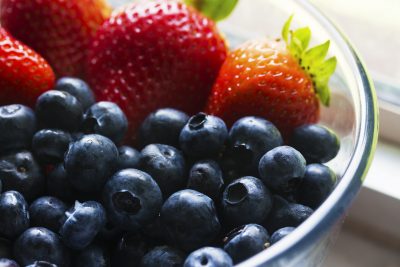Most of us spend a large portion of the day hunched forward. Think about when you are working on the computer, cooking, driving or even relaxing. Your typical posture during these activities is head and neck forward, shoulders rounded forward, back curved and hips flexed. When you remain in this position for an extended period of time, the muscles in the front of the body tend to shorten or contract, while the muscles in the back of the body tend to weaken. This can be a set up for back, neck and shoulder problems and in addition, tends to make you look shorter, heavier and less confident.
Stretching before and after exercise as well as during the day is often overlooked in the rush to “get your workout in”. Stretching however, has numerous benefits. According to a study published in the Annals of Physical Medicine and Rehabilitation Medicine in September 2016, by I Fekhfekh, et al, dynamic muscle stretching of the knee musculature actually resulted in an increase strength gain in those muscles. Interestingly, this study also found a decrease in the postural stability of the knee after stretching. In English, it appears that stretching helps your to build strength, but may decrease the stability of the muscles you stretch at least temporarily.
In general, stretching helps to improve flexibility, joint range of motion, and usually is helpful for injury prevention. Stretching helps by increasing blood flow to the muscles stretched. This increased blood flow carries important nutrients to your muscles to allow for muscle growth and repair. In addition, the increased blood flow helps to wash away muscle “waste” which leads to decreased soreness and inflammation of the muscle.
If allowed to remain in a contracted position for a prolonged period of time, our muscles will shorten. For example if you spend a large portion of your day sitting in a chair or driving, the muscles in the front of the hips, your hip flexors will shorten. These muscles have a direct effect on both your posture and your back health.
So what should you do?
It is important to stretch the muscles in the front of the body at least daily.
Exercises that focus on the hip flexors:
-Kneeling hip flexor stretch – in the position of a lunge, allow your back knee to touch the floor and drive the hip of your front leg forward. This will stretch the hip flexor of the knee on the floor
–Pigeon stretch – extend your right leg straight back and bring the heel of your left leg underneath your right hip. Then drive your hips forward towards the ground. Stretch and repeat on the other side.
– Yoga poses such as: low lunge, crescent lunge, upward facing dog, and revolving side angle pose
Stretches that focus on the chest muscles and prevent rounded shoulders:
– Door Frame stretch- stand in a doorway or at the corner of a room with your arms up like you were going to stop traffic. Line your arms up from the elbow to the hand with the doorframe or in the corners of the wall. Step towards the door and you should feel a stretch in your chest (pectoralis “pec” muscles) and hold for 20-30 seconds.
– Wall slides – stand with your back to the wall and keep your shoulders against the wall. Walk forward 1-2 steps and slide your arms up and down the wall and squeeze your shoulder blades together. You should feel a stretch in your upper chest muscles.
–Shoulder squeeze stretch – clasp your hands together behind your back and slowly try to lift your hands. Squeeze your shoulder blades together to stretch out the chest wall.
– Yoga poses include : bridge pose, camel pose, cobra pose and cow face pose
Stretches for your neck:
– Chin Tucks (Neck Retraction) – keep your shoulders back and your head in a neutral position (eyes facing forwards, chin level) slowly move your head backwards until you feel a slight stretch in the back of your neck. Hold for 10-20 seconds and repeat. If needed you can apply a gentle pressure on your chin with your fingertips to press your chin backwards and deepen the stretch.
Incorporating these exercises into your daily routine will help to prevent shortening of the muscles in the front of the body which leads to poor posture and often pain of the neck and back. As always, if you are having pain which persists you should be evaluated by a certified health care professional to ensure that these exercises are safe for you.
This week we primarily discussed stretching exercises to prevent muscle contraction, and next week we will discuss the importance of strengthening the back muscles to further combat the issues of a hunched posture.


